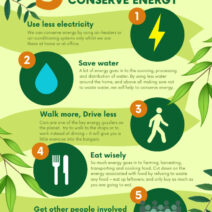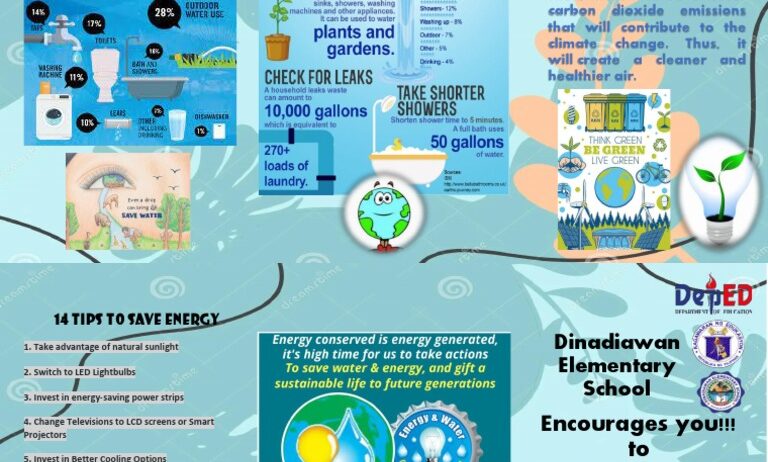Water conservation is an imperative topic in today’s world, particularly as climate variability exacerbates resource shortages. What many may not realize is the intrinsic relationship between energy use and water consumption. This piece unravels that connection, exploring how conserving energy can lead to significant water savings, ultimately benefiting both individuals and the environment.
In our quest to combat climate change, it’s crucial to understand the dual nature of water and energy systems. Conventional models often inspect them in silos; however, energy production heavily relies on water, and vice versa. This dynamic showcases a fundamental principle: reducing energy demand inherently leads to diminished water use.
To appreciate this link, one must first understand the energy-water nexus. For instance, thermal power plants, which produce electricity through combustion or nuclear fission, require substantial volumes of water for cooling and steam generation. According to research, generating one megawatt-hour of electricity through fossil fuel may consume upwards of 2,200 liters of water. By transitioning to energy-efficient appliances and renewable energy sources, such as wind or solar, we can dramatically reduce this water footprint. The use of non-thermal energy alternatives eliminates or significantly lowers water usage.
Beyond energy generation, consider the energy utilized during water treatment and distribution. Water must be processed, purified, and delivered to our homes and businesses, each requiring energy in the form of electricity and fossil fuels. A staggering amount of energy—estimated at 3-6% of national energy consumption in the U.S. alone—is attributed to moving and treating water. By adopting water-saving technologies like low-flow fixtures, rainwater harvesting systems, and efficient irrigation strategies, the reduction in water demand not only translates into energy savings but can also relieve pressure on treatment facilities. This interconnectedness is often overlooked in discussions about resource management.
Moreover, the interdependent relationship extends further into the lifecycle of products we consume. Producing goods, particularly food, necessitates both energy and water. The agricultural sector, for example, is a significant consumer of both resources. It takes approximately 1,800 gallons of water to produce just one pound of beef, whereas plant-based alternatives like vegetables or legumes require substantially less water and energy. By modifying our consumption patterns—favoring sustainable practices and opting for seasonal or local produce—we can influence water usage beyond just our immediate context, affecting broader systemic changes throughout the economy.
The ripple effect of these practices cannot be overstated. Switching to energy-efficient appliances isn’t merely an adjustment; it is a monumental shift in our approach to resource utilization. Energy-efficient heating and cooling systems, refrigerators, and washing machines typically consume less electricity, which subsequently leads to lower water demands in energy production facilities. This cascading effect not only conserves water but also mitigates greenhouse gas emissions associated with energy generation.
Additionally, the role of public policy cannot be neglected. Governments can implement regulations and incentives that encourage energy and water efficiency. Energy standards for appliances, incentives for renewable energy adoption, and water conservation programs can foster a culture of sustainability. By providing tax rebates for installing water-efficient appliances or subsidizing advanced irrigation systems, policymakers can significantly enhance community engagement in conservation. Individuals are more likely to adopt energy-efficient practices when they are economically incentivized.
As aforementioned, technology plays a pivotal role in this transition. Smart home devices, like programmable thermostats and leak detectors, enable homeowners to monitor their consumption patterns, adjust usage, and detect inefficiencies. The integration of Artificial Intelligence (AI) in managing energy and water resources can revolutionize how we consume these essential commodities. For instance, smart irrigation controllers utilize weather forecasts and soil moisture levels to optimize watering schedules, thus conserving both water and reducing the energy needed for pumping and treatment.
Education and awareness are paramount in encouraging a collective movement towards conserving both energy and water. Community workshops, school programs, and online resources can equip individuals with the knowledge to take actionable steps in their own lives. Awareness campaigns can help elucidate the unseen connection between energy conservation and water savings, ultimately galvanizing a shared responsibility for environmental stewardship.
In conclusion, the intricate connection between energy use and water consumption is a critical consideration in our drive toward sustainability. Conserving energy can lead to substantial water savings, creating a dual benefit for both resources. By re-evaluating our consumption habits, embracing innovative technologies, and advocating for sound policy measures, individuals and communities can make considerable strides in conserving these essential resources. The path to a sustainable future is paved with conscious choices, and every small action contributes to a larger movement against climate change.








